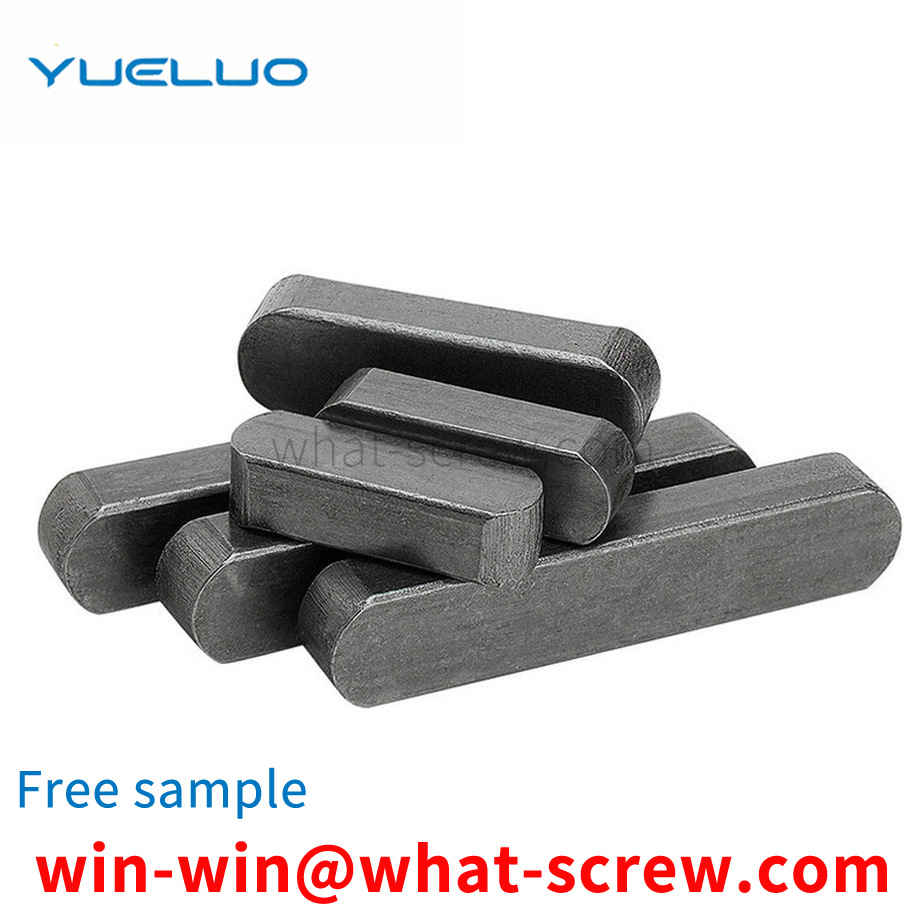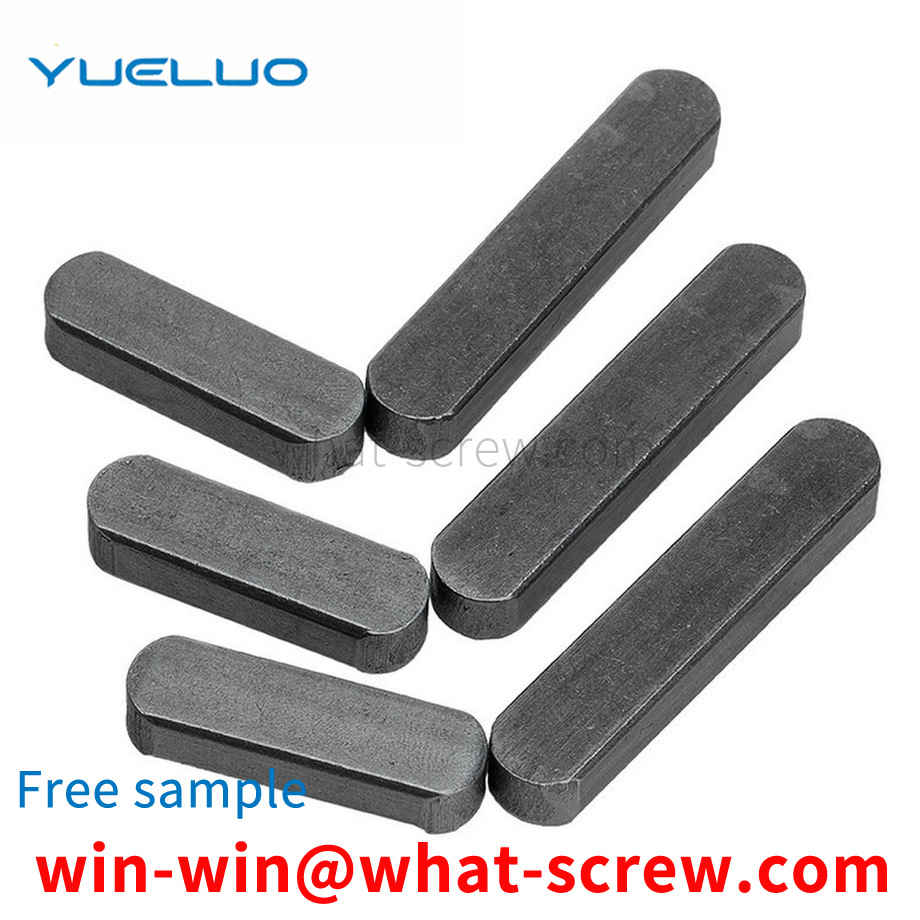Existing wood screws are composed of a threaded portion with a tapered angle and arranged along a tapered stem and a screw head. The head of the screw can be a countersunk head, hemispherical, or other shapes, and the head of the screw has a groove that fits with the tool, a word groove, and a concave cross groove. The taper angle of existing wood screws is either 45 degrees or 60 degrees, and the front end of the taper angle is a pointed point formed by a rotating thread. The existing wood screws have the following three deficiencies in use. Because the taper angle is 45 degrees or 60 degrees, and the thread angle is 71 degrees, the resistance when entering the material is relatively large, so the existing wood screws are manually screwed. It is difficult to screw in, especially when it is used for hardwood materials, and it often happens that the groove of the screw head is screwed out; A large lateral moment will be formed when the screw is screwed, which is prone to the problem of deviation from the position; in addition, because the existing screw is tapered, it will be subjected to both radial force and axial force when entering the material, and its stress state It is more complicated, so it is easy to cause the cracked wood material to burst, and even cause the material to have longitudinal cracks and be unusable.
Lock washers feature easy installation. 1. Just place the helical tooth surfaces on the inner side of the two washers against each other and place them between the nut and the connecting material; 2. After the nut is tightened, the radially convex surface on the outer side of the lock washer and the contact surfaces at both ends are in an engaged state, and The angle of the slope angle of the helical tooth surface on the inner side of the washer is greater than the thread angle of the bolt; 3. When the bolt is elongated due to mechanical vibration, the nut will rotate and loosen accordingly. Because the frictional force of the outer radial convex surface of the lock washer is greater than the frictional force between the inner helical tooth surfaces. In this state, only the relative dislocation between the inner helical tooth surfaces is allowed to generate a certain lifting tension; 4. When the bolt shrinks, the helical tooth surface of the washer will make the nut return to its original position. So as to achieve 100% anti-loose and tightening effect; 5. Washers are suitable for relatively flat and smooth surfaces; 6. If the connecting material is non-metallic material, a metal plate can be fixed on the connecting material, so that the Use the lock washer; 7. There is no need to use a torque wrench when installing the lock washer; 8. You can choose to use an air tool when installing or removing the lock washer.
Screws are a kind of fasteners commonly used in machinery, but most of the screws commonly used in the market are standard parts. The screws themselves are ordinary and have no function of preventing loosening and protecting the matrix. Therefore, in order to prevent the screws from loosening during use , Usually it is necessary to configure additional elastic washers, flat washers, etc. that are suitable for screws, and these elastic washers and flat washers are mostly metal products. During use, it is easy to wear with the body base and damage the protection of the sheet metal base. After long-term use, metal washers are easy to rust, which affects the tightening effect and appearance of screws. In addition, the use of metal washers not only increases the weight and cost, but also the assembly process is complicated and cumbersome, and the anti-loosening and anti-wear effects are not ideal. .
1. First remove the sludge on the surface of the broken head of the broken screw, use the center gun to kill the center gun of the section, and then use an electric drill to install a drill bit with a diameter of 6-8 mm to drill the hole in the center of the section, pay attention to the hole must be drilled through. After the hole is drilled through, remove the small drill bit and replace it with a drill bit with a diameter of 16 mm, and continue to expand and drill through the hole of the broken bolt. 2. Take a welding rod with a diameter of less than 3.2 mm and use a medium and small current to carry out surfacing welding from the inside to the outside in the hole of the broken bolt. Take half of the entire length of the broken bolt at the beginning of the surfacing welding. When starting the surfacing welding, the arc should not be too long. In order to avoid burning through the outer wall of the broken bolt, surfacing to the upper end face of the broken bolt, and then continue surfacing to weld a cylinder with a diameter of 14-16 mm and a height of 8-10 mm. 3. After the surfacing is completed, hammer the end face with a hammer to make the broken bolt vibrate along its axial direction. Due to the heat generated by the previous arc and the subsequent cooling plus the vibration at this time, the broken bolt and the thread of the body will be loose in between. 4. Carefully observe, when it is found that a small amount of rust leaks from the fracture after the knock, take the M18 nut and put it on the surfacing column head and weld the two together. 5. After welding, use a torx wrench to cover the nut while it is still hot, and twist it back and forth, or tap the end face of the nut with a small hand hammer while twisting back and forth, so that the broken bolt can be taken out. 6. After taking out the broken bolt, use a suitable tap to process the thread in the frame to remove rust and other debris in the hole.
The square nut is a fastener that needs to be used in the installation of the cable tray. In the prior art, the square nut 1 is pressed by the elastic force of the spring 2 below it and the opening of the C-shaped steel 3 (as shown in Figure 1, Figure 2), in the absence of external force, through the interaction of pressure and static friction, the C-shaped steel 3 will not move vertically or horizontally, which can facilitate engineering installation. The advantage of this installation method is that it can slide anywhere on the C-shaped steel 3, but the disadvantage is that it occupies the bottom space of the C-shaped steel 3, and the spring 2 will interfere with the installation hole of the square nut I, which affects the installation.
We have many years of experience in the production and sales of screws, nuts, flat washers, etc. The main products are: 8-grade high-strength hexagon nuts, titanium socket head screws, four-corner screws and nuts, washer GB93 and other products, we can provide you with suitable screws for you. Firmware Solutions.



















 Service Hotline
Service Hotline




